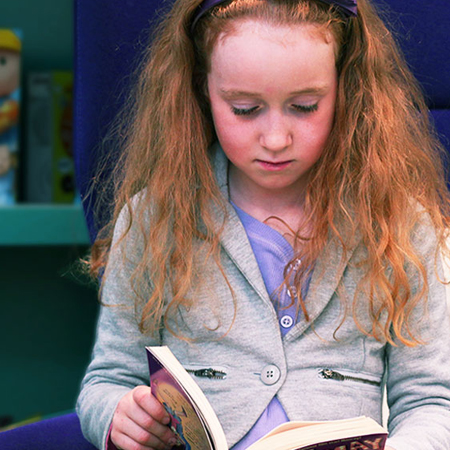The Magic of Reading
Age 5 – 7: How to Manage the Transition to School
‘It is so important that the reading routine established before children start school continues long after. We know for sure that children who are read to after the age of five read for pleasure more often themselves and do better at school in lots of subjects, not just English, all the way through primary and secondary school.’
David Reedy, Literacy expert
This is such an exhilarating time: your child is starting school and will soon learn how to read. Most children find learning to read exciting, and parents are thrilled by their child’s progress. Lots of children pass through the transition from listener to reader painlessly, learning bit by bit and enjoying the journey. But for others it’s not so much fun. They may find it hard and confidence-sapping. For a few, the process can turn them off reading altogether.

How to Read
At school, the teachers are helping your child to learn the skill of reading. At home your role is to encourage your child to love reading. You can do this by keeping to your reading routine and making it as much fun as you can! The goal is for your child to really look forward to your reading time together.
The Right Environment
Children’s lives are full of hustle and bustle: getting ready for school, arriving home tired and often wired, friends coming to tea, play dates, afterschool clubs. At home, there are phones, tablets and other gaming devices at their fingertips. If you want your child to read, they need quiet time where they can concentrate and immerse themselves in a story. A regular bedtime routine is an easy way to achieve this.
Help Build Their Attention Span
You can help build sustained attention, which will help your child follow a lesson at school. When watching a film or reading a book, stop during the story and ask them what they think might happen next, or why a character did something.
Bring Books to Life
Look for opportunities to bring books you have at home to life. If your daughter loves the Fairy Animals of Misty Wood series, when you are out for a walk or in the car point out trees and woods and say, ‘I wonder if Chloe the Kitten Fairy is there today. Shall we read about her when we get home?’
Praise Any Independent Reading Steps
As your child becomes more competent at reading for themselves they might want to show you how they can recognise words. While you are reading a picture book, say, ‘Can you read that word/sentence? Well done!’ Use lots of positive language and praise them. Say, ‘We’ll tell Mum/Dad later that you read that!’
Explore New Ways of Reading, Genres and Formats
If they are reading independently, feed your child new books, give them variety, and keep talking to them about what they are reading. And keep on reading to them too. If your child is reading well and confidently, try co-reading – where you share the same book and you read portions of the text in turn.
Explore every avenue you can think of to find new and different things to read. Listen to what your child is interested in and seek out books or magazines about them. There’s a book out there for everyone!
The information and tips on this page are taken from Help Your Child Love Reading, which contains advice on encouraging reading for every age group – from babies to teens.

